I had taken it into my head some time ago, that if I ever ran out of black powder and lead, I still needed to be able to put meat on the table. So, I decided to make me a bow and arrows from things I could find in the woods and fashion with the hand tools I have. I decided to do it as best as I could as the First Nations people would have done it.
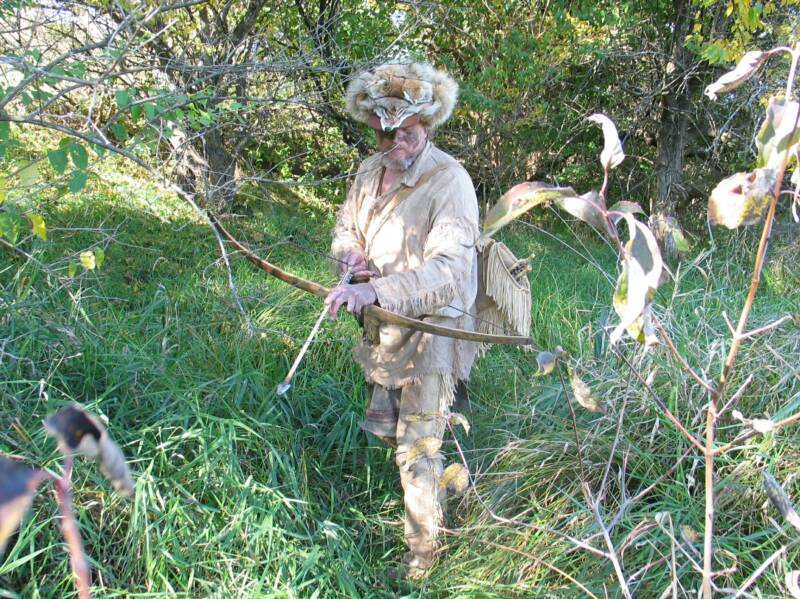
Primitive Bow Hunt
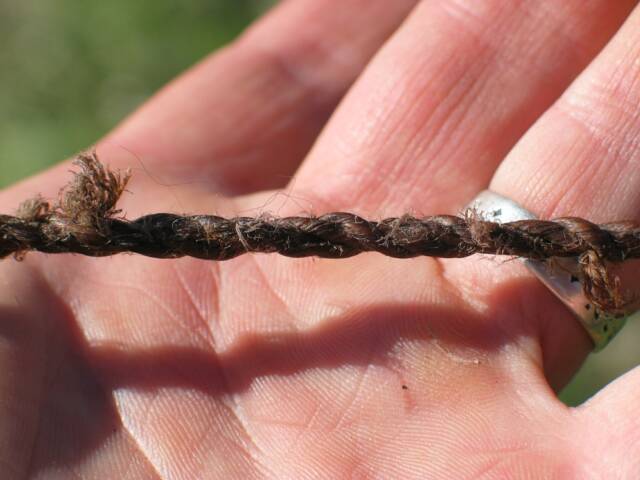
I made the bow string out of the inner bark of Willows. I stripped out the inner bark and boiled it for about an hour with some wood ash. While it was still wet, I separated it and began to twist it into twine. When I had twisted about 28 feet, I let it dry. Then I rubbed it down with tallow and twisted it back on itself to get the string you see here. It made more than enough for two bow strings.
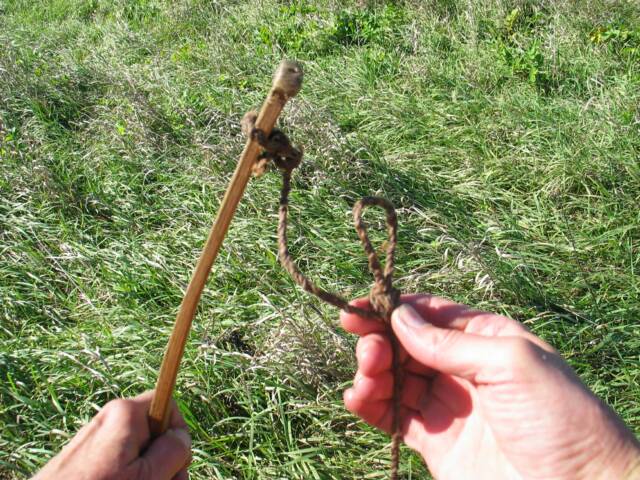
First Nations peoples would tie the end of their strings to the upper end of the bow, so the loop that goes around the end of the bow was always close at hand. This way, the bow could be quickly braced on the ground, or inside the stirrup, and quickly strung.
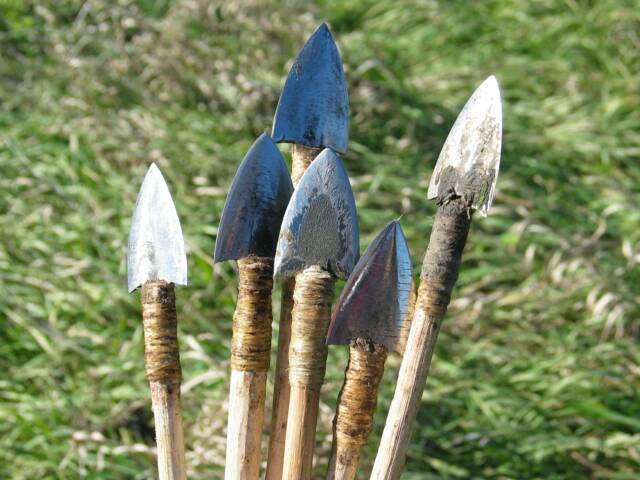
I didn't have time to learn flint knapping, so I made the heads out of iron barrel bands I had layin' around. They are held to the Willow shafts with deer sinew. Traditionally, a hunter would take 10 arrows with him on the hunt. He would carry 40 when goin' to war.
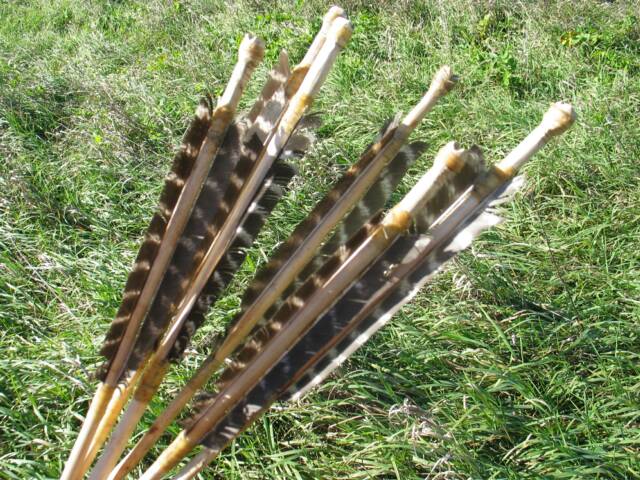
The fletchings are all wild turkey feathers, held down at the ends with deer sinew. You may notice the bulbs at the nock ends of the arrows. First Nations people hold onto the arrow to draw it, with a secondary pull on the string with the ends of the finger tips. To make it a little easier on my old arthritic hands, I carved the slight bulbs and some grooves to help my grip.
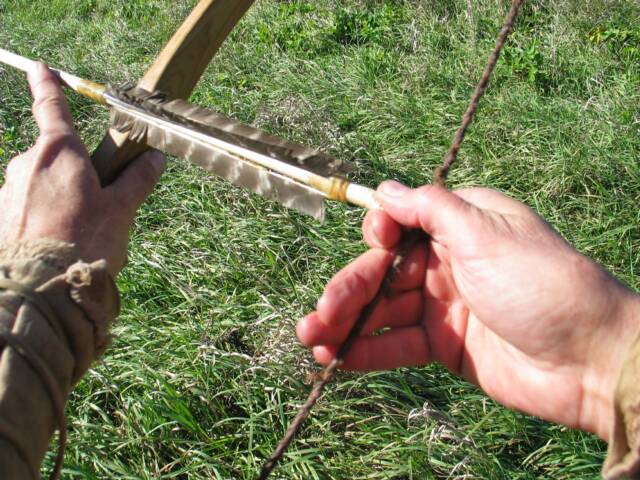
This shows the grip on the arrow as it is being drawn. Notice my left sleeve is tied out of the way with some thong.
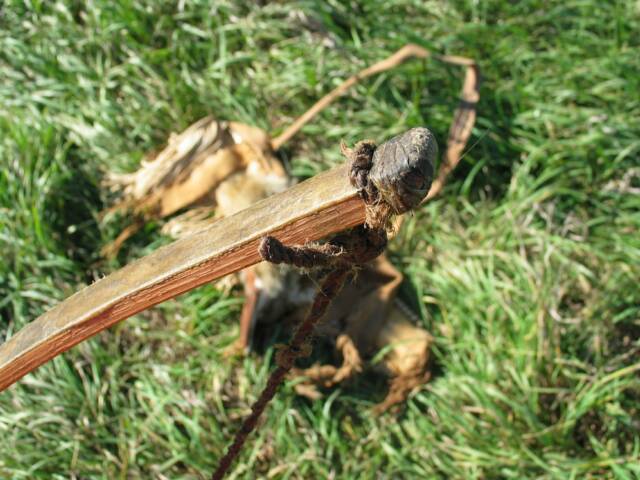
The Bitternut Hickory bow is backed with rawhide to reduce the chance of breaking. It is lightly glued with hide glue made by boilin' down rawhide and other scraps. The rawhide folds over the tips of the bow and is wrapped with more deer sinew. Many bows are backed with sinew, but I didn't have enough left to make my arrows and back my bow too. Hence the rawhide backing.
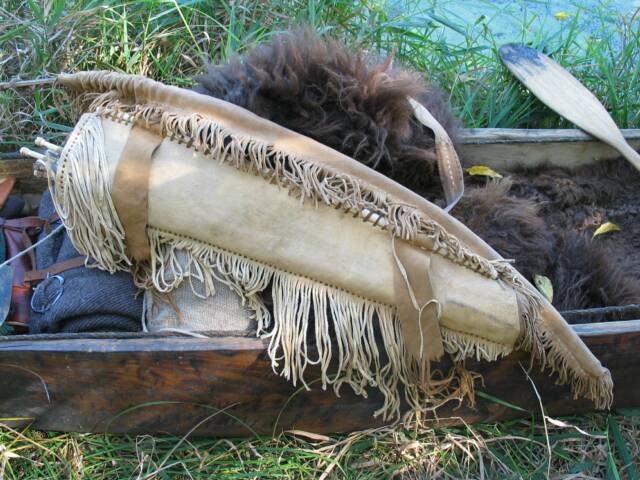
The bow is traditionally carried in a sheath hung above the quiver. For a right-handed hunter, this would hang over the left shoulder. It seems clumsy to me, but that was the traditional way, so I'm sure there was a good reason for it.
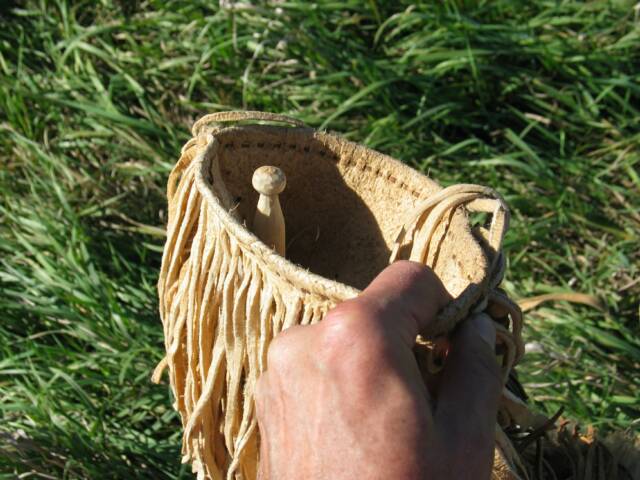
Inside the quiver, a stick extends to the bottom, attached to a rawhide cup. The stick is used to raise and lower the rawhide cup. All of the arrows can be pulled out of the quiver for selection of a special arrow, by pulling on the stick.
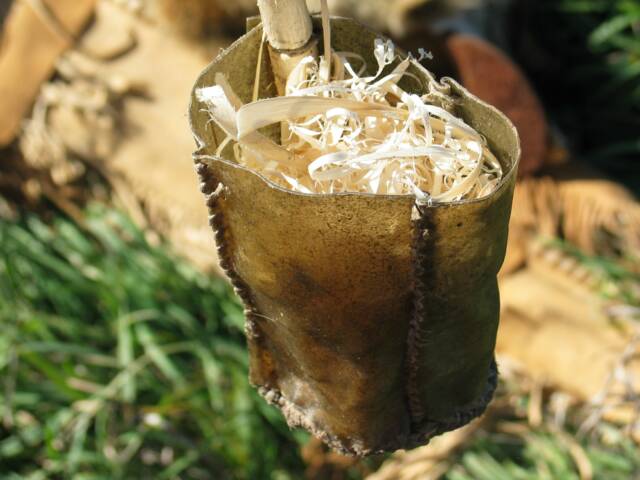
The quiver is treated with tallow, and the rawhide cup, (shown here), is the driest place to carry tinder. This photo shows the tinder stored in the rawhide cup from the bottom of the quiver. The tinder also cushions the arrow heads from each other, the rawhide cup, and reduces the noise from the arrows.
Often, a pouch or pocket would be incorporated in the quiver to carry flint and steel.
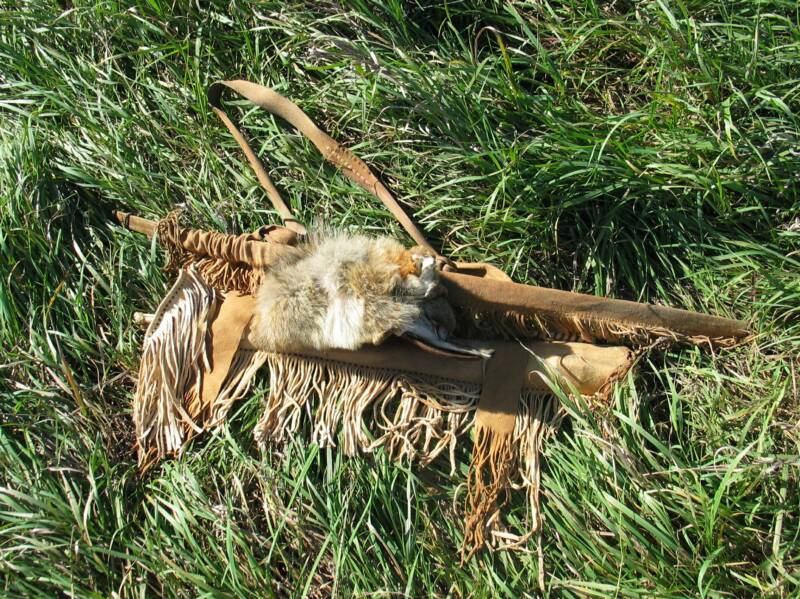
The whole hunting kit is light and easy to maneuver through even dense brush, (if there is any such thing as "easy" in dense brush!). The fringe act to wick away moisture and break-up the outline for easier concealment.